Cosmos and Context
In his 1986 song, “The Boy in the Bubble,” Paul Simon sang that “every generation throws a hero up the pop charts.” I am amending this Simonism slightly for this blog post to read “every generation throws a science popularizer into the big time.”Last week's premiere of the re-boot of the classic television series Cosmos - hosted by astrophysicist Neil deGrasse Tyson - sparked this observation.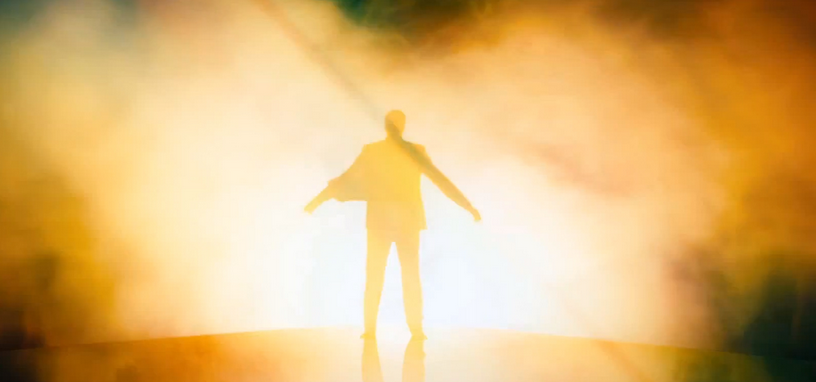 A huge amount of media buzz surrounds the remake - co-produced by Seth McFarlane - of the classic series that PBS first aired in 1980. Originally hosted by astronomer Carl Sagan with the full title of Cosmos: A Personal Voyage, the series became – until dethroned by Ken Burns’ 1990 epic The Civil War – the most widely watched series in the history of American TV. ((Over 500 million people worldwide are estimated to have seen Cosmos 1.0))That’s a tough act for anyone to follow. Tyson’s version, which aired on several Fox-affiliated channels, did so-so in the ratings, drawing in about 5.8 million viewers. Even with this relatively weak initial showing – and I hope the numbers do pick up – a whole new generation of viewers are able to learn about the universe and science via Tyson's Cosmos. That alone makes it important.But a true comparison of the two versions of Cosmos involves more than just viewership numbers and market share. Understanding this difference demands a closer inspection of the context and circumstances in which the Sagan and Tyson versions appeared.Historian and author Audra Wolfe recently tackled this question in a fine essay that appeared on-line a few days ago. Wolfe made the important point that understanding the first Cosmos series requires that we recognize the Cold War context in which it was broadcast. She writes that PBS broadcast Cosmos at “a moment when Cold War tensions were heating back up.”This context is critical. Uncle Sam supported science for many reasons, not least the fact that American national security was predicated on technologies developed by a robust cadre of scientists and engineers. Carl Sagan, unlike Neil deGrasse Tyson, was an outspoken critic of scientific research that was too closely tied to defense needs. Still, there’s no denying the fact that the space probe missions, telescope technologies, and so forth that made his (and so many other scientists’) research possible was derived from “high-tech weaponry built on cutting-edge science.” ((Other colleagues have done excellent jobs of pointing out the historical inaccuracies that mar Cosmos 2.0, such as Rebekah Higgitt and Meg Rosenburg))Knowing the context of Cosmos, c. 1980 help us understand even better both the original show as well as the 21st century, post-9/11 post-academic science version. The timing is critical; production for Cosmos started in 1978, squarely within the context of the Carter administration. It appeared at the end of a period in U.S. history when public support for science and technology had reached a low point.
A huge amount of media buzz surrounds the remake - co-produced by Seth McFarlane - of the classic series that PBS first aired in 1980. Originally hosted by astronomer Carl Sagan with the full title of Cosmos: A Personal Voyage, the series became – until dethroned by Ken Burns’ 1990 epic The Civil War – the most widely watched series in the history of American TV. ((Over 500 million people worldwide are estimated to have seen Cosmos 1.0))That’s a tough act for anyone to follow. Tyson’s version, which aired on several Fox-affiliated channels, did so-so in the ratings, drawing in about 5.8 million viewers. Even with this relatively weak initial showing – and I hope the numbers do pick up – a whole new generation of viewers are able to learn about the universe and science via Tyson's Cosmos. That alone makes it important.But a true comparison of the two versions of Cosmos involves more than just viewership numbers and market share. Understanding this difference demands a closer inspection of the context and circumstances in which the Sagan and Tyson versions appeared.Historian and author Audra Wolfe recently tackled this question in a fine essay that appeared on-line a few days ago. Wolfe made the important point that understanding the first Cosmos series requires that we recognize the Cold War context in which it was broadcast. She writes that PBS broadcast Cosmos at “a moment when Cold War tensions were heating back up.”This context is critical. Uncle Sam supported science for many reasons, not least the fact that American national security was predicated on technologies developed by a robust cadre of scientists and engineers. Carl Sagan, unlike Neil deGrasse Tyson, was an outspoken critic of scientific research that was too closely tied to defense needs. Still, there’s no denying the fact that the space probe missions, telescope technologies, and so forth that made his (and so many other scientists’) research possible was derived from “high-tech weaponry built on cutting-edge science.” ((Other colleagues have done excellent jobs of pointing out the historical inaccuracies that mar Cosmos 2.0, such as Rebekah Higgitt and Meg Rosenburg))Knowing the context of Cosmos, c. 1980 help us understand even better both the original show as well as the 21st century, post-9/11 post-academic science version. The timing is critical; production for Cosmos started in 1978, squarely within the context of the Carter administration. It appeared at the end of a period in U.S. history when public support for science and technology had reached a low point.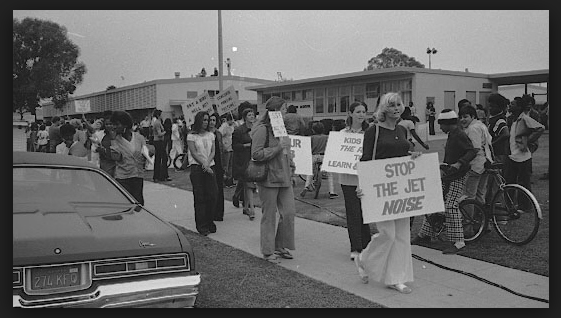 Fears of environmental catastrophe and nuclear war coupled with anxieties about resource depletion and overpopulation had strained earlier optimism to the breaking point. Sagan wrote Cosmos in the context of, if not in direct response to, this anti-science & technology zeitgeist. ((Sagan co-wrote the show with Ann Druyan and Steve Soter.))We can see this in the clear and powerful way that Sagan frames and situates Cosmos in classical humanistic framework. He deliberately shows that science is allied to the humanities – references to history, languages, philosophy, and classics abound. I can still recall my sense of profound disappointment when I watched the first episode of Cosmos – I was just 13 at the time – in which Sagan walks through a recreation of the great Library of Alexandria and mourns its tragic loss to fire.
Fears of environmental catastrophe and nuclear war coupled with anxieties about resource depletion and overpopulation had strained earlier optimism to the breaking point. Sagan wrote Cosmos in the context of, if not in direct response to, this anti-science & technology zeitgeist. ((Sagan co-wrote the show with Ann Druyan and Steve Soter.))We can see this in the clear and powerful way that Sagan frames and situates Cosmos in classical humanistic framework. He deliberately shows that science is allied to the humanities – references to history, languages, philosophy, and classics abound. I can still recall my sense of profound disappointment when I watched the first episode of Cosmos – I was just 13 at the time – in which Sagan walks through a recreation of the great Library of Alexandria and mourns its tragic loss to fire. 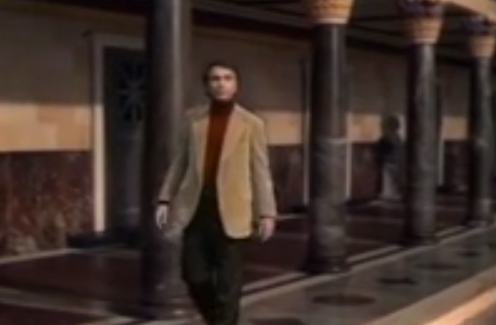 Sagan framed science as an intellectual adventure, the means to which humans better understand not just their Universe but themselves. It’s impossible not to see this as a clever move on the part of Sagan and his co-writers in response to the anti-science vibe of the early 1970s. Sagan’s science and technology was not that of the mega-machine, the mad inventor, or the technocrat. It resonated with the humanities. Like its subtitle said, it was a "personal journey."At the same time, Sagan also gently chided those in the audience who were prone to conceive of science in too broad of terms. The 1970s certainly saw their share of groovy “pseudoscience.” Popular interest in UFOs, Bigfoot, ESP, astrology, and all other shade of the paranormal abounded. A few episodes into the Cosmos series, Sagan outlines how astrology may once have had elements of science – its emphasis on measurement, observation, and mathematics – but it had long since yielded to astronomy and astrophysics.
Sagan framed science as an intellectual adventure, the means to which humans better understand not just their Universe but themselves. It’s impossible not to see this as a clever move on the part of Sagan and his co-writers in response to the anti-science vibe of the early 1970s. Sagan’s science and technology was not that of the mega-machine, the mad inventor, or the technocrat. It resonated with the humanities. Like its subtitle said, it was a "personal journey."At the same time, Sagan also gently chided those in the audience who were prone to conceive of science in too broad of terms. The 1970s certainly saw their share of groovy “pseudoscience.” Popular interest in UFOs, Bigfoot, ESP, astrology, and all other shade of the paranormal abounded. A few episodes into the Cosmos series, Sagan outlines how astrology may once have had elements of science – its emphasis on measurement, observation, and mathematics – but it had long since yielded to astronomy and astrophysics.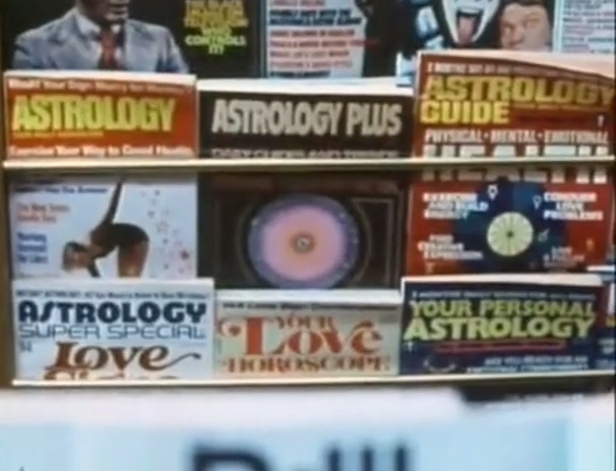 The astrology of the 1970s that so many American turned to for horoscopes and predictions was, Sagan explained, unscientific bunk. It was his response to the tides of anti-rationality and anti-science that had flooded American bookstores, New Age gatherings, and popular media.Production of Cosmos started just as a boom in scientific popularization was shaping up and Sagan rode that swell. Between 1978 and 1984, more than a four dozen new magazines, newspaper sections, and television shows devoted to “popular science” appeared. ((Bruce V. Lewenstein, “Was There Really a Popular Science ‘Boom’?,” Science, Technology, and Human Values, 1987, 12, 2: 29-41.)) Cosmos appeared smack in the midst of the largest jump in science journalism since the opening years of the Space Race, just as public attitudes toward science and technology were swinging away from pessimism and skepticism.It’s clear that Tyson is no Sagan. Instead of a science communicator, he is primarily a science salesman. And to do this effectively, Tyson must strip science of its political and social controversy, avoiding issues that Sagan was willing to tackle.
The astrology of the 1970s that so many American turned to for horoscopes and predictions was, Sagan explained, unscientific bunk. It was his response to the tides of anti-rationality and anti-science that had flooded American bookstores, New Age gatherings, and popular media.Production of Cosmos started just as a boom in scientific popularization was shaping up and Sagan rode that swell. Between 1978 and 1984, more than a four dozen new magazines, newspaper sections, and television shows devoted to “popular science” appeared. ((Bruce V. Lewenstein, “Was There Really a Popular Science ‘Boom’?,” Science, Technology, and Human Values, 1987, 12, 2: 29-41.)) Cosmos appeared smack in the midst of the largest jump in science journalism since the opening years of the Space Race, just as public attitudes toward science and technology were swinging away from pessimism and skepticism.It’s clear that Tyson is no Sagan. Instead of a science communicator, he is primarily a science salesman. And to do this effectively, Tyson must strip science of its political and social controversy, avoiding issues that Sagan was willing to tackle.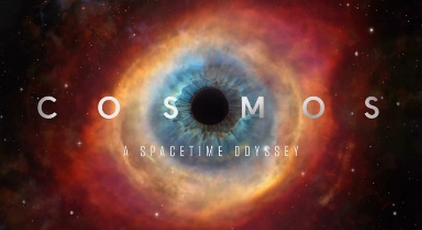 But why should Tyson try to be Sagan? The Groovy Seventies and the Cold War are over. Cosmos 2.0 is airing at a time when the forces of anti-science look very different than they did 35 years ago. Today, anti-science is not something that manifests from grassroots concerns but is instead manufactured by large donors and special interest groups. If Tyson refuses to critique the militarization of science – which is so patently obvious to scarecely even need mentioning – then I doubt he has the stomach to call out David H. Koch, a noted climate change skeptic, AND a major donor to the PBS science show NOVA.When we watch Cosmos 2.0 today, it is at a time that is definitely not anti-technology. If anything, it’s the complete opposite. Commercialized scientific research is the path to more and newer (if not better) technology, or so we’re often told. Innovation, creative destruction, connectivity, and disruption are championed in a manner and degree that would have been seen as suspicious in the 1970s. Sagan’s science was a path to humanity’s greater understanding of itself. Cosmos 2.0 still maintains shades of this. But it is appearing on our televisions at a time when science is seen more as a vocation – more STEM jobs! – and a lever of commercial riches.Every generation gets the science popularizer it deserves. Although I am glad that Tyson is out there promoting the beauty and utility of science for a new cohort of viewers, I remain happier that I got Carl Sagan.
But why should Tyson try to be Sagan? The Groovy Seventies and the Cold War are over. Cosmos 2.0 is airing at a time when the forces of anti-science look very different than they did 35 years ago. Today, anti-science is not something that manifests from grassroots concerns but is instead manufactured by large donors and special interest groups. If Tyson refuses to critique the militarization of science – which is so patently obvious to scarecely even need mentioning – then I doubt he has the stomach to call out David H. Koch, a noted climate change skeptic, AND a major donor to the PBS science show NOVA.When we watch Cosmos 2.0 today, it is at a time that is definitely not anti-technology. If anything, it’s the complete opposite. Commercialized scientific research is the path to more and newer (if not better) technology, or so we’re often told. Innovation, creative destruction, connectivity, and disruption are championed in a manner and degree that would have been seen as suspicious in the 1970s. Sagan’s science was a path to humanity’s greater understanding of itself. Cosmos 2.0 still maintains shades of this. But it is appearing on our televisions at a time when science is seen more as a vocation – more STEM jobs! – and a lever of commercial riches.Every generation gets the science popularizer it deserves. Although I am glad that Tyson is out there promoting the beauty and utility of science for a new cohort of viewers, I remain happier that I got Carl Sagan.